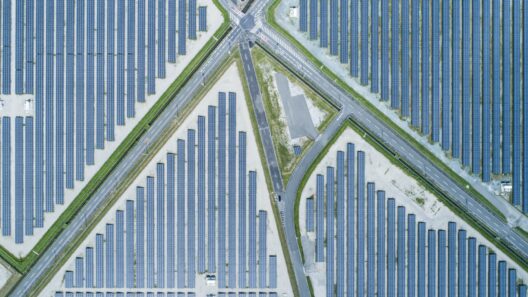In the grand tapestry of urban existence, our movements are the intricate threads that weave together the fabric of daily life. To traverse the world, we often rely on modes of transport that, while expedient, extract a significant toll on our planet’s delicate equilibrium. Yet, the act of moving around can be transformed from an energy-consuming endeavor into an empowering experience that conserves resources and preserves our environment. Thus, we embark on the journey of “Ride Walk Recharge,” an ethos that encapsulates the harmony between mobility and sustainability.
At the very heart of this doctrine lies the virtue of walking. Often underestimated and underappreciated, walking is a powerful metaphor for both simplicity and purpose. When one walks, they engage in a primal dance with the earth, each step a commitment to preserving the very essence of nature. In a world that churns ceaselessly, walking invites us to connect with our surroundings, cultivating mindfulness in a society that is often ensnared by distractions. Furthermore, when individuals opt for their two feet over gas-guzzling machines, they champion a mode of transport that produces no carbon emissions, thus markedly reducing their carbon footprint.
However, the allure of walking is amplified when integrated into the broader concept of multimodal transport. Just as a symphony orchestrates several instruments to create a harmonious piece of music, our commuting experiences can benefit from an amalgamation of various methods of transportation. Cycling, riding public transport, or utilizing electric scooters alongside walking can exponentially decrease energy consumption compared to relying solely on fossil-fuel-powered vehicles. This interplay produces a profound symphony of energy conservation, culminating in an environmentally-friendly lifestyle.
In urban areas, integrating these diverse methods necessitates thoughtful infrastructure improvements. Cities are the living lungs of our civilization, and they must breathe well to thrive. Enhanced bike lanes, pedestrian-friendly pathways, and efficient public transportation systems serve as the veins through which energy-efficient transport flows. Investing in such infrastructure not only facilitates mobility but bolsters community ties. When individuals feel safe and comfortable navigating their environment, they are far more likely to engage in active transportation methods. In essence, the streets transform into arteries that nourish both community and planet.
Yet, Ride Walk Recharge is not merely about physical movement; it extends into the domain of energy use in our everyday lives. Even while commuting, we can adopt practices that ensure less energy is expended. A prime example would be embracing renewable energy sources. Communities can install solar panels on public transport vehicles or infrastructure, harnessing the power of the sun to fuel our journeys. By marrying technology with intention, we can manifest a future where energy consumption is not inherently detrimental to our planet.
Furthermore, the notion of recharging extends beyond energy sources; it embodies the philosophy of restorative practices. As individuals engage in Ride Walk Recharge, they can cultivate habits that rejuvenate not only their bodies but also their mental states. Taking time to enjoy the surroundings while walking or biking provides a reprieve from the frenzied pace of modern life. Nature acts as a balm, soothing the weary spirit. Hence, every walk becomes a pilgrimage, every bike ride a journey toward self-discovery and rejuvenation.
Community involvement is paramount in realizing the full potential of Ride Walk Recharge. Grassroots initiatives, whether through local advocacy groups or neighborhood gatherings, spark enthusiasm and encourage individuals to embrace sustainable mobility. Creating car-free days or organizing community bike rides can foster connections among residents and evoke a collective understanding of the importance of energy conservation. When communities engage together, the act of moving transforms into a shared celebration of life and sustainability.
As we traverse this intricate maze of life, the allure of technological solutions beckons. The digital age has bestowed upon us remarkable tools to streamline our efforts to save energy while moving. Apps that track and reward sustainable travel habits, or platforms that facilitate carpooling, illustrate the fusing of technology with eco-consciousness. Such innovations harness human connectivity, making energy conservation an engaging and communal undertaking rather than an isolated endeavor.
Yet, it remains vital to remember the understated beauty of simplicity. While embracing technology and innovation is significant, the essence of energy conservation fundamentally lies in our choices. A conscious decision to favor walking over driving, or to select public transport over personal vehicles, reinforces the core principles of Ride Walk Recharge. Each action becomes a brushstroke painting a greener future.
To conclude, the quest for energy conservation while navigating our world can indeed evolve into a nuanced and deliberate practice. Ride Walk Recharge symbolizes an awakening to the intrinsic relationship we possess with our environment. It prompts us to reevaluate our choices and embrace an approach that is gentle on the planet while promoting our well-being. To dance with our surroundings, to forge community connections, and to weave together conscious choices is to truly embody the philosophy of energy conservation in motion. As we step into this new paradigm, we find ourselves not just commuting but embarking on a profound journey—one that harmonizes movement with mindfulness and champions a resilient planet for generations to come.








